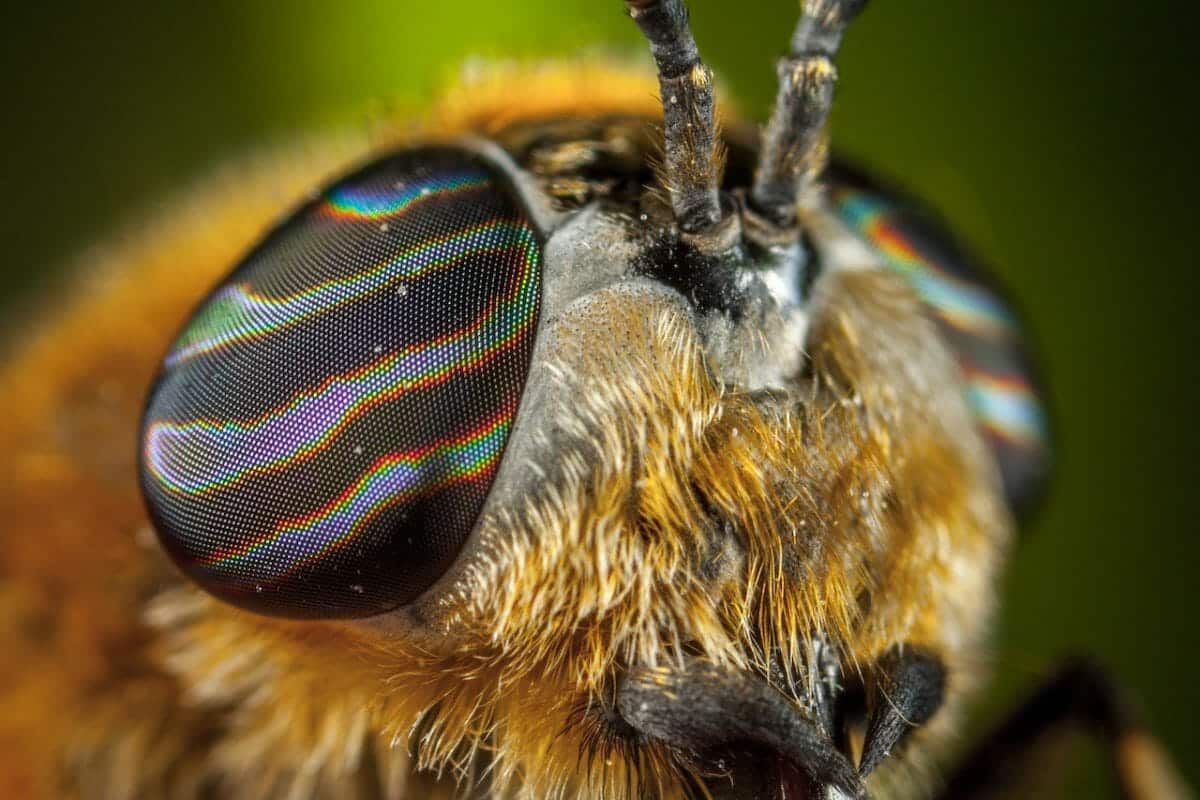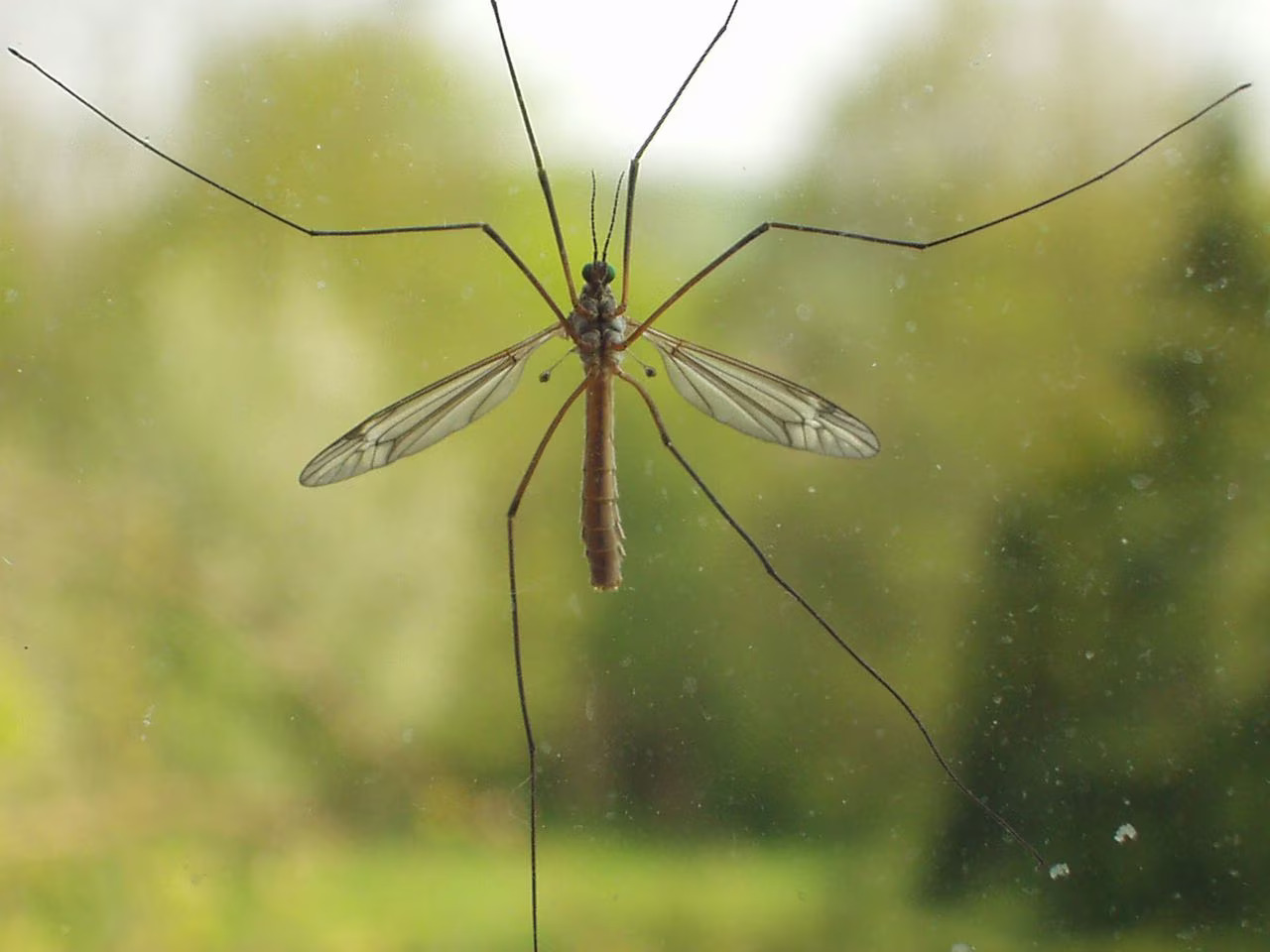Home>Gardening News and Trends>Latest News>Why Don’T We See Giant Insects Today?


Latest News
Why Don’T We See Giant Insects Today?
Modified: January 22, 2024
Discover the latest news on why giant insects are no longer a part of our world today. Explore the fascinating reasons behind their extinction and the implications for our current ecosystem.
(Many of the links in this article redirect to a specific reviewed product. Your purchase of these products through affiliate links helps to generate commission for Chicagolandgardening.com, at no extra cost. Learn more)
Table of Contents
Introduction
In the ancient past, the Earth was home to a myriad of fascinating and diverse creatures, some of which were gigantic insects. These oversized insects, such as dragonflies with 2-foot wingspans and millipedes the size of a modern-day crocodile, have long captured our imagination. However, if we take a look around us today, it’s clear that the world is devoid of such colossal insects. So, what happened to these enormous creatures?
Understanding the absence of giant insects in the present day requires us to delve into the fascinating world of evolution and explore the complex factors that have shaped life on Earth over millions of years. To begin with, it is important to note that insects have been around for more than 350 million years, evolving and adapting to various environmental conditions. Their evolution was intertwined with the Earth’s changing climate, geography, and ecology.
Over the course of millions of years, both the planet and its inhabitants have undergone immense transformations. This has led to significant changes in the habitats and ecosystems that insects occupy. As a result, many environmental factors have contributed to the decline and extinction of giant insects.
In this article, we will examine some of the key reasons why giant insects are no longer present in our world today. From changes in the environment and oxygen levels to dietary constraints and ecological factors, each aspect played a crucial role in driving the decline in the size of insects. By understanding these factors, we can gain valuable insights into the complex interplay between living organisms and their environment and appreciate the diverse array of factors that have shaped the natural world as we know it.
Evolution of Insects
To understand why giant insects are not present in the current era, it is crucial to delve into the evolutionary history of these fascinating creatures. Insects have evolved over millions of years, adapting to different environmental conditions and transforming in size, shape, and characteristics. Throughout their evolutionary journey, various factors have influenced their development and shaped their present forms.
During the Carboniferous period, approximately 360 to 300 million years ago, the Earth experienced high oxygen levels, which reached up to 35% compared to the current 21%. This oxygen-rich atmosphere played a pivotal role in the evolution of gigantic insects. Oxygen, being essential for metabolic processes, allowed insects to grow to unprecedented sizes. With more oxygen available, insects were able to absorb it more effectively, providing the necessary energy for their larger bodies.
During the subsequent periods, numerous geological and climatic shifts altered the environment, affecting the evolution of insects. The rise of seed plants during the Permian period led to the development of ecosystems where insects found new food sources and adapted to different niches. This allowed them to diversify and evolve in various ways, leading to the emergence of numerous species and body shapes.
However, as the Earth progressed into the Mesozoic era, around 252 to 66 million years ago, significant changes in the planet’s climate and geography occurred. The breakup of the supercontinent Pangaea led to the formation of new continents and oceans, altering the distribution of land and water. These changes fragmented habitats, creating barriers for the movement and distribution of insects. As a result, insect populations became isolated, causing genetic divergence and the formation of new species.
Additionally, the evolution of other organisms, such as dinosaurs and early mammals, also played a role in shaping the trajectory of insect evolution. Insects had to adapt to changing ecological pressures and interactions with other creatures. They developed various defense mechanisms, such as camouflage, mimicry, and chemical defenses, to survive predation and competition for resources.
Overall, the evolution of insects has been marked by dynamic interactions with environmental factors, including oxygen levels, geological events, climate shifts, and interactions with other organisms. These factors have influenced the overall size and shape of insects, ultimately leading to the absence of giant insects in the present era.
Environmental Changes
Throughout the Earth’s history, the environment has undergone significant changes, which have had a profound impact on the evolution and size of insects. Environmental shifts such as climate change, habitat loss, and the rise of new ecosystems have all played a role in the decline of giant insects.
One of the key environmental changes that influenced the size of insects is the transition from warm, humid climates to cooler and drier conditions. During the Carboniferous period, when giant insects were prevalent, the Earth experienced a tropical climate with lush vegetation and abundant food sources. However, as the climate gradually shifted towards cooler and drier conditions, the habitats of insects began to change, resulting in the emergence of new ecological niches and the decline of giant insects.
In addition to climate change, the transformation and fragmentation of natural habitats have also played a significant role in diminishing the population of giant insects. The destruction of forests, wetlands, and other ecosystems through deforestation, urbanization, and industrialization has led to the loss of suitable habitats for many insect species. Without their natural habitats, giant insects were unable to find the resources they needed to survive and reproduce in large numbers.
Furthermore, the rise of new ecosystems, such as grasslands and savannas, which occurred during the transition from the Mesozoic to the Cenozoic era, presented different challenges for insects. These new environments favored smaller and more agile insects that could navigate through open spaces and adapt to the changing vegetation. The disappearance of dense forests, which were the preferred habitats for giant insects, further contributed to their decline.
Moreover, the emergence of flowering plants, or angiosperms, in the Cretaceous period had a profound impact on the evolution of insects. The co-evolutionary relationship between insects and flowering plants led to the development of specialized pollination strategies and adaptations. This diversification of plant species created new ecological niches, driving the evolution of smaller, more efficient pollinators, rather than large and cumbersome insects.
Overall, environmental changes, including climate shifts, habitat loss, and the rise of new ecosystems, have played a significant role in the decline of giant insects. These changes altered the availability of suitable habitats, food sources, and ecological niches, favoring the evolution of smaller and more adaptable insect species. However, it is important to note that even though giant insects may no longer exist, they have left an indelible mark on the evolutionary history of Earth and continue to captivate our imagination today.
Oxygen Levels
One crucial factor that influenced the size of insects throughout their evolutionary history is the level of oxygen in the atmosphere. During the Carboniferous period, when giant insects thrived, atmospheric oxygen levels were significantly higher compared to today. This oxygen-rich environment provided ample resources for larger insect bodies to develop and thrive.
High oxygen levels during the Carboniferous period, reaching up to 35%, allowed insects to grow to immense sizes. Oxygen is vital for cellular respiration, providing energy for metabolic processes. With more oxygen available, insects were able to extract a greater amount of energy from their environment and support larger body sizes.
However, as time progressed and the Earth’s climate and vegetation changed, oxygen levels gradually declined. By the time large dinosaurs roamed the Earth during the Mesozoic era, oxygen levels had dropped to about 15%. This reduction in available oxygen limited the size and growth potential of insects and other organisms, leading to the absence of giant insects in the present day.
The decrease in oxygen levels had a direct impact on the respiratory systems of insects. As insects breathe through a network of tiny tubes called tracheae, the diffusion of oxygen becomes less efficient as the levels in the atmosphere decrease. This limitation constrains the oxygen supply to the tissues, making it challenging for insects to sustain large bodies.
Moreover, the decline in oxygen levels also influenced the competitiveness and survival of insects in their ecological niches. Smaller insects generally have higher surface-area-to-volume ratios, allowing for more efficient oxygen exchange. This advantage gave smaller insects an edge in adapting to lower oxygen concentrations and outcompeting their larger counterparts.
In summary, the decline in atmospheric oxygen levels over millions of years has played a significant role in the diminished size of insects. From the oxygen-rich environments of the Carboniferous period, which facilitated the growth of giant insects, to the lower oxygen levels of the present day, smaller and more efficient insects have adapted and thrived. Although the absence of giant insects in the modern era may be disappointing to some, it is a testament to the ever-changing dynamics of our planet’s atmosphere and the fascinating adaptations of these incredible creatures.
Dietary Constraints
The size and evolution of insects are not solely determined by environmental factors; their dietary constraints also play a significant role. The availability of suitable food sources and the nutritional quality of those sources directly impact the growth and development of insects. Changes in the availability and composition of food throughout history have contributed to the decline of giant insects.
During the Carboniferous period, the Earth was abundant in lush vegetation, including giant ferns, tree-sized horsetails, and towering club mosses. These diverse plant species provided a plentiful and nutrient-rich diet for insects, allowing them to grow to enormous sizes. The availability of an abundant food supply allowed giant insects to extract the necessary nutrients to sustain their large bodies.
However, as the Earth transitioned into different geological periods, the composition of plant life changed. The rise of gymnosperms, such as conifers, during the Mesozoic era reduced the variety and nutritional quality of available food sources for insects. Gymnosperms have tougher, more fibrous leaves and cones, which are less palatable and provide fewer nutrients compared to the lush vegetation of the Carboniferous period.
Furthermore, with the diversification of plant species, many insects adapted to feed on specific plants or flower nectar, leading to narrower dietary preferences. This specialization in diet, combined with changes in vegetation, made it challenging for giant insects, which were more generalist feeders, to find suitable food sources.
Another important aspect is the shift from herbivory to predation. As other organisms, such as dinosaurs, evolved and occupied ecological niches, they hunted and preyed upon insects. This increased predation pressure on insects forced them to adopt defensive mechanisms and diversify their feeding habits. In turn, this limited the growth potential of giant insects, as they had to allocate energy and resources to defense mechanisms, rather than solely focusing on growth.
Overall, the dietary constraints faced by insects, including changes in vegetation and diversification of feeding habits, have contributed to the decline of giant insects. The availability and nutritional quality of food sources, as well as the increasing pressure from natural predators, have shaped the evolution and size of insect species over time. By adapting to different diets and specializing in specific food sources, insects have continued to thrive in various ecological niches, albeit in smaller and more specialized forms.
Ecological Factors
Ecological factors, such as competition, predation, and interdependent relationships within ecosystems, have played a crucial role in shaping the size and distribution of insect species. These factors have influenced the decline of giant insects and the emergence of smaller, more specialized insects in the present day.
Competition for resources is an important ecological factor that has impacted the evolution of insects. As ecosystems became more complex and diverse, with the rise of new plant species and the emergence of other organisms, competition for food, habitat, and mates intensified. Giant insects, with their larger size and resource requirements, may have struggled to compete with smaller and more versatile insect species for limited resources.
Predation is another ecological factor that has influenced the size of insects. In environments where predators exerted intense pressure on insects, larger sized insects may have been at a disadvantage. They would have been more susceptible to predation, as their size made them more visible and easier targets. Smaller and more agile insects, on the other hand, could evade predators more effectively and occupy specialized ecological niches.
The interconnectedness and interdependence of species within ecosystems also impacted the evolution of insects. As ecosystems evolved and diversified, complex relationships between plants, insects, and other organisms developed, shaping the evolution and adaptations of insects. For example, the coevolution between flowering plants and insects, such as bees and butterflies, led to the specialization of pollinators and the evolution of smaller, more efficient insects. These intricate relationships and ecological dependencies may have favored smaller insects adapted to specific roles in the ecosystem.
Additionally, environmental disturbances and events, such as natural disasters, climate shifts, and changes in vegetation, have disrupted ecosystems and altered the dynamics of insect populations. These disturbances may have favored smaller and more resilient species that could adapt and recover faster from such events.
Overall, ecological factors, including competition, predation, interdependencies, and environmental disturbances, have played a significant role in the decline of giant insects and the prevalence of smaller and more specialized species in the present day. These factors have shaped the evolution of insects, allowing them to adapt to changing ecological circumstances and occupy specific niches within diverse ecosystems.
Conclusion
The absence of giant insects in the present day can be attributed to a combination of evolutionary, environmental, dietary, and ecological factors. Throughout their long evolutionary history, insects have adapted and evolved in response to changes in the Earth’s climate, vegetation, and ecological dynamics.
The decline of giant insects is linked to the decreasing levels of atmospheric oxygen as well as the changes in environmental conditions and habitats. The transition from oxygen-rich environments and lush vegetation during the Carboniferous period to cooler and drier climates, along with the rise of new ecosystems such as grasslands, led to the decline of giant insects and the emergence of smaller, more adaptable species.
Dietary constraints further influenced the evolution of insects. Changes in the composition of plant life, the specialization of feeding habits, and competition for resources shaped the size and distribution of insect species. The availability and quality of food sources played a crucial role in determining the growth potential of insects and contributed to the decline of giant insects.
Ecological factors, including competition, predation, and interdependent relationships, also impacted the size and diversity of insect species. Smaller and more agile insects had advantages in competing for limited resources and evading predation, allowing them to thrive in complex ecosystems.
Despite the absence of giant insects in the modern era, their legacy lives on. The fossil records of these magnificent creatures provide valuable insights into the ancient world and the dynamic nature of life on Earth. The evolution and decline of giant insects remind us of the ever-changing nature of our planet and the intricate relationships between organisms and their environment.
Ultimately, the absence of giant insects in today’s world serves as a testament to the remarkable adaptability and resilience of insects. As Earth continues to evolve, new ecological niches will emerge, and insects will continue to adapt, diversify, and fascinate us with their incredible forms and behaviors.





